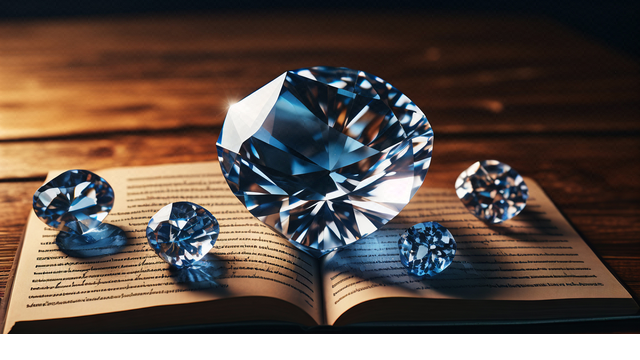
The Ultimate Guide to Diamonds: Types, Value, and Care Tips
Diamonds have long been cherished as symbols of love commitment, and luxury. Whether you're looking for an engagement ring, a special gift, or simply want to learn more about these exquisite gems, understanding diamonds is essential. In this guide, we'll explore the different types of diamonds, their value, and how to care for them.
1. Types of Diamonds
Diamonds are not all created equal. Here are the primary types you should be aware of:
- Natural Diamonds: These diamonds are formed over millions of years beneath the Earth’s surface. Extracted from mines around the globe, they are treasured for their rarity and beauty.
- Lab-Grown Diamonds: Grown in controlled environments, lab-created diamonds possess the same physical and chemical properties as natural diamonds, but they are often more affordable and environmentally friendly. They are becoming increasingly popular among eco-conscious consumers.
- Fancy Color Diamonds: Unlike traditional colorless diamonds, fancy color diamonds come in a variety of hues, including blue, pink, and yellow. Their unique colors can significantly increase their value and desirability among collectors.
2. Understanding Diamond Value
Several factors contribute to the value of a diamond, commonly known as the "Four Cs":
- Cut: The cut of a diamond affects its brilliance. A well-cut diamond will reflect light beautifully, creating stunning sparkle. The most popular cuts include round, princess, and oval.
- Color: Diamonds are graded on a color scale from D (colorless) to Z (light yellow). Colorless diamonds are more rare and thus more valuable. However, many people prefer near-colorless diamonds (G-H) for a balance between quality and price.
- Clarity: This refers to the presence of inclusions or blemishes in a diamond. Clarity is graded on a scale from Flawless (no inclusions visible at 10x magnification) to Included (obvious inclusions). Higher clarity generally means a more valuable diamond.
- Carat Weight: This is the weight of the diamond, with one carat equal to 0.2 grams. Larger diamonds are more valuable, but carat weight should be considered alongside the other Cs for a comprehensive view of value.
3. Caring for Your Diamonds
To ensure that your diamonds remain stunning and flawless, proper care is important. Here are some helpful tips:
- Regular Cleaning: Clean your diamond jewelry frequently to maintain its brilliance. Soak it in a solution of warm water and mild soap, and gently scrub with a soft brush to remove dirt and oils.
- Safe Storage: Store diamonds in a soft cloth or a separate compartment in a jewelry box to prevent scratching. Avoid keeping them next to other jewelry to minimize the risk of damage.
- Periodic Inspections: Regularly check the settings of your diamond jewelry, especially rings. Ensure that the prongs are secure to prevent any stones from loosening or falling out.
4. Buying Diamonds: What to Consider
When buying a diamond, especially for an engagement ring, there are several important considerations:
- Set a Budget: Determine how much you are willing to spend before shopping. Remember, the four Cs will guide your choices within your budget.
- Choose the Right Setting: The setting can greatly affect the overall appearance of the diamond. Consider styles that complement the diamond shape and enhance its beauty.
- Research and Compare: Don't rush your purchase. Take time to research different retailers and compare prices, quality, and return policies.
- Ask for Certification: Always purchase diamonds that come with a certification from a reputable grading laboratory, such as the GIA (Gemological Institute of America) or AGS (American Gem Society). This serves as a guarantee of the diamond’s quality and authenticity.
Conclusion
Diamonds are timeless gems that hold both emotional and monetary value. Understanding the different types, factors affecting their value, and proper care techniques will help you make educated decisions when purchasing or caring for diamonds. Whether you’re selecting an engagement ring or adding a piece to your collection, diamonds will always remain a symbol of love and luxury.
AD
article by 52ctf is licensed under CC BY-NC-ND 4.0